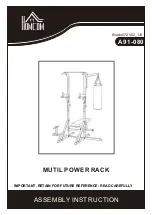
Input Module
1. MIC
These are to be connected with microphone XLR
jack are used for the balanced signal
.
+48V
phantom power available on each input Mic socket
.
2. LINE
The unbalanced mic input is provided for the use of
a un-balance mic and is designed to accept a
unbalanced high impedance input signal
.
(This used
for connection Deck, Turntable, Keyboard etc.)
3. INSERT
The INSERT is a bread point the input channel
signal path
.
It allows the signal to be taken out from
the mixer
.
Through an external equipment such as
a compressor and the back to continue the final mix
output
.
4. GAIN
This rotary knob adjusts the channel signal
level
.
Too high: the signal will distort as it overloads
the channel
.
Too low: the level if back hiss will be
more noticeable and you may not be able to get
enough signal level to the output of the
mixer
.
Proper trim setting allows the mixer to work
in the best operating level
.
Adjusts the trim when
signal presents to the highest level without
triggering the peak LED
.
That is the most
appropriate position
.
5. EQUALIZERS
These equalizers are designed to suit different
room acoustics
,
feedback control and improve the
live PA sound
.
No amount of equalization will
correct the frequency response curve of a poor
loudspeaker
.
Always begin with all control in the “O”
position and avoid excessively cutting/boosting
large segments of the peculiar frequency which
would limit the system dynamic range or increase
the possibility of the unpleasant feedback sound
.
HIGH
Turn to the right to boost high frequency
,
adding crispness to cymbals, vocals and
electronic instruments
.
Turn to the left to cut this frequency
,
reducing sibilance or
hiss
.
The control has a shelving response that gives 15dB of boost or cut at 12KHz
.
MID
The knob provides 15dB of boost or cut at 2.5kHz
.
just like the HF EQ knob
.
The
mid band covers the range of most vocals
,
listen carefully when you use this control
to find how particular characteristics of vocal or guitar signal can be enhanced
or reduced
.
Set the upper knob in the “O” position when not required
.































